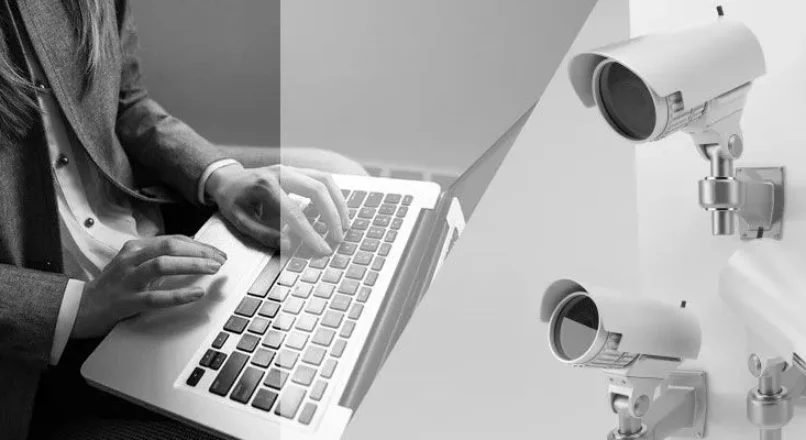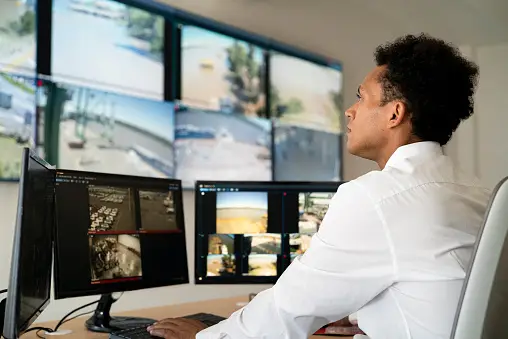
CCTV Security Solution in UAE – Casecade Computer Trading
What Are the Legal Implications of CCTV Security Use?
CCTV (Closed-Circuit Television) systems have become an integral part of modern security strategies, offering surveillance and protection in various settings. However, their use is governed by a range of legal considerations that vary by jurisdiction but generally share common themes. Understanding the legal implications of CCTV security use is essential for individuals, businesses, and organizations to ensure compliance and avoid potential legal pitfalls.
1. Privacy Laws and Regulations
One of the primary legal concerns surrounding CCTV use is the protection of individuals’ privacy rights. Many countries have strict privacy laws that regulate how and where CCTV cameras can be installed. For example, cameras should not be placed in areas where people have a reasonable expectation of privacy, such as bathrooms, changing rooms, or private residences. Additionally, some jurisdictions require businesses to inform customers and employees that they are being recorded, often through clear signage.
2. Data Protection and Storage
CCTV systems capture and store video footage, which is considered personal data under many data protection laws. These laws dictate how this data should be handled, including how long it can be retained, how it should be stored, and who can access it. For instance, the General Data Protection Regulation (GDPR) in the European Union imposes stringent requirements on the processing of personal data, including video surveillance footage. Businesses must ensure that they have clear policies in place for the secure storage and timely deletion of CCTV recordings.
3. Usage Justification and Proportionality
Legal frameworks often require that the use of CCTV be justified and proportionate to the purpose it serves. This means that the decision to install CCTV should be based on a legitimate security need, such as preventing theft, vandalism, or ensuring the safety of individuals. Overly intrusive or excessive surveillance, especially in areas where it is not necessary, could be deemed disproportionate and potentially unlawful.
4. Compliance with Local Regulations
Different countries and regions have specific regulations governing CCTV use. For instance, in the United States, CCTV use is subject to both federal and state laws, which can vary significantly. In the United Kingdom, the Information Commissioner’s Office (ICO) provides guidance on CCTV use under the Data Protection Act. It’s essential to be aware of and comply with the specific legal requirements in your location to avoid penalties and legal challenges.
5. Employee Surveillance and Workplace Monitoring
The use of CCTV in the workplace raises additional legal considerations, particularly concerning employees’ rights. Employers must balance the need for security with respecting employees’ privacy. In many jurisdictions, employees must be informed about the presence of CCTV cameras and the reasons for their use. Covert surveillance is generally discouraged and can only be justified in exceptional circumstances, such as investigating serious misconduct.
6. Public Area Surveillance and Government Regulations
When CCTV is used in public spaces, there are often stricter legal implications. Government and municipal bodies may have specific regulations on public surveillance, including the installation, monitoring, and usage of CCTV security in these areas. Public surveillance must often be justified by public safety concerns and must comply with transparency requirements, including informing the public about the surveillance practices.
7. Legal Responsibilities in Case of Data Breaches
If a CCTV system is compromised and video footage is leaked or accessed unlawfully, the entity responsible for the system may face legal consequences. This can include fines, lawsuits, and damage to reputation. It’s crucial to implement robust cybersecurity measures to protect the data captured by CCTV cameras and to have a response plan in place in case of a data breach.
What Are the Key Components of a CCTV Security System?
A Closed-Circuit Television (CCTV) security system is an essential tool for monitoring and safeguarding both residential and commercial properties. Understanding the key components of a CCTV security system can help you make informed decisions when designing or upgrading your security setup. Below are the primary components of a CCTV security system:

1. Cameras
Cameras are the core of any CCTV system. They capture and record footage in real-time, which can be viewed live or reviewed later. CCTV cameras come in various types, including:
- Dome Cameras: These are discreet and offer 360-degree coverage, making them ideal for indoor monitoring.
- Bullet Cameras: These are more visible and are often used for outdoor surveillance due to their long-range focus.
- PTZ Cameras: Pan-Tilt-Zoom cameras can be remotely controlled to adjust the viewing angle and zoom in on specific areas.
- IP Cameras: Internet Protocol cameras offer higher resolution and can be accessed remotely via the internet.
2. DVR/NVR (Digital Video Recorder/Network Video Recorder)
The DVR or NVR is responsible for recording and storing the video footage captured by the cameras. The choice between DVR and NVR depends on the type of cameras used:
- DVR: Typically used with analog cameras, DVRs encode and process video signals from the cameras.
- NVR: Works with IP cameras and offers more flexibility, higher video quality, and easier integration with modern networks.
3. Monitors
Monitors display the live feed from the CCTV cameras and are used for real-time monitoring. They can be standard computer monitors or specialized surveillance monitors designed to handle multiple video feeds simultaneously.
4. Cabling and Connectors
Cabling is crucial for transmitting video signals from the cameras to the DVR/NVR. The type of cable used depends on the camera system:
- Coaxial Cables: Commonly used with analog systems and DVRs.
- Ethernet Cables (Cat5e/Cat6): Used with IP cameras and NVRs, allowing for network-based transmission.
- Power Cables: Necessary for supplying power to the cameras, unless the system uses Power over Ethernet (PoE).
5. Power Supply
CCTV cameras and recording devices require a consistent power supply to operate effectively. Power supplies can range from individual adapters for each camera to centralized power distribution units (PDUs) that manage power for multiple devices.
6. Storage Devices
Storage is essential for retaining recorded footage for future reference. Hard drives within the DVR/NVR usually provide this storage, but additional options include:
- External Hard Drives: For expanded storage capacity.
- Cloud Storage: Offers offsite storage and remote access to footage, which can be crucial for backup and disaster recovery.
7. Control Interface
The control interface allows users to manage the CCTV system, adjust camera settings, and review footage. This can be done through:
- On-Screen Display (OSD): Accessed directly via the DVR/NVR.
- Software Applications: Installed on computers or mobile devices for remote monitoring and control.
Understanding the Technology Behind CCTV Systems?
Closed-Circuit Television (CCTV) systems have become a cornerstone of modern security and surveillance. From safeguarding homes to monitoring large commercial properties, these systems provide an invaluable layer of protection. But what makes CCTV technology so effective? Let’s dive into the technology behind CCTV systems to understand how they work and why they are so essential.

1. Basic Components of CCTV Systems
A typical CCTV system comprises several key components:
- Cameras: The eyes of the system, capturing video footage.
- Recorders: Devices that store the footage for later viewing.
- Monitors: Screens where live or recorded footage is displayed.
- Cables and Connectors: These transmit video signals between cameras, recorders, and monitors.
2. Types of CCTV Cameras
CCTV cameras come in various types, each suited for specific applications:
- Dome Cameras: Named for their dome-shaped housing, these cameras are discreet and suitable for indoor use.
- Bullet Cameras: Cylindrical and often used outdoors, bullet cameras are designed for long-distance viewing.
- PTZ Cameras: Pan-Tilt-Zoom cameras can be remotely controlled to move and zoom in on specific areas.
- IP Cameras: These digital cameras transmit footage over a network, allowing for high-definition video and remote access.
3. Camera Resolution and Image Quality
Resolution plays a critical role in the clarity of video footage. Common resolutions include:
- Standard Definition (SD): Basic quality, suitable for general surveillance.
- High Definition (HD): Provides clearer images, ideal for identifying individuals and details.
- Ultra High Definition (4K): Offers the highest clarity, allowing for detailed scrutiny of footage.
4. Recording and Storage
Recording devices are crucial for storing video footage. There are two main types:
- Digital Video Recorders (DVRs): Used with analog cameras, DVRs convert and store video footage in digital format.
- Network Video Recorders (NVRs): Designed for IP cameras, NVRs handle digital footage directly, often supporting higher resolutions and more advanced features.
Storage options vary from internal hard drives to cloud-based solutions, each offering different benefits in terms of capacity and accessibility.
5. Transmission Technologies
The transmission of video footage can be accomplished through several technologies:
- Analog Transmission: Traditional method using coaxial cables, suitable for basic surveillance needs.
- Digital Transmission: Utilizes Ethernet cables or wireless networks for transmitting high-definition video over IP.
- Power over Ethernet (PoE): Allows both data and power to be delivered through a single Ethernet cable, simplifying installation.
6. Remote Access and Integration
Modern CCTV systems often include features for remote access and integration:
- Mobile Apps: Allow users to view live footage and receive alerts on their smartphones.
- Cloud Storage: Provides off-site storage and access to footage from anywhere with an internet connection.
- Integration with Other Systems: Many CCTV systems can be integrated with alarm systems, access control systems, and other security measures for comprehensive protection.
7. Advanced Features
Advancements in CCTV technology have introduced several sophisticated features:
- Motion Detection: Triggers recording or alerts when movement is detected within the camera’s field of view.
- Night Vision: Utilizes infrared technology to capture clear footage in low-light or dark conditions.
- Facial Recognition: Analyzes video footage to identify individuals based on facial features.
8. Choosing the Right CCTV System
Selecting the right CCTV system involves assessing your specific needs:
- Coverage Area: Determine how many cameras are needed and their placement.
- Resolution: Choose based on the level of detail required.
- Storage Needs: Consider how much footage will be recorded and for how long.
- Budget: Balance cost with the features and quality required.

Casecade Computer Trading offers a comprehensive CCTV security solution tailored specifically for the unique needs of the UAE market. Our advanced surveillance systems are designed to provide unparalleled security for both residential and commercial properties. Utilizing state-of-the-art technology, our CCTV cameras deliver high-definition video quality, ensuring that every detail is captured with clarity. The systems are equipped with features such as night vision, motion detection, and remote access capabilities, allowing users to monitor their premises in real-time from anywhere in the world.
CCTV Security Solution in UAE:-
Whether you need to protect your home, office, and commercial space, our customizable security solution can be tailored to meet your specific needs and budget, our CCTV Security Solution in UAE also includes options for video analytics, and facial recognition to enhance the overall security of your premises. This state-of-the-art solution incorporates high-definition cameras equipped with night vision capabilities, ensuring clear and detailed footage even in low-light conditions.


Leave a reply